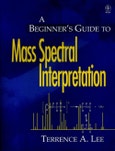This book is a logical, step-by-step guide to identification of organic compounds by mass spectrometry. The book is organized into chapters covering the major types of organic compounds, including alcohols, acids and esters, aldehydes and ketones, ethers, hydrocarbons, halogenated compounds, amines and amides, and sulfur-containing compounds. In each chapter, the mechanisms of the major fragmentation pathways are discussed, with reference to several simple sample compounds. By teaching the user to recognize typical fragmentations, the book removes the need to search databases, often limited, of electronic spectra. Key features of the book include:
200 representative spectra of common organic compounds
Functional group approach to mass spectra interpretation
Appendix of 'unknown' spectra with step-by-step guide to identification
This book is a must for anyone who needs to identify organic molecules by mass spectrometry but does not need to know the detailed workings of a mass spectrometer.
200 representative spectra of common organic compounds
Functional group approach to mass spectra interpretation
Appendix of 'unknown' spectra with step-by-step guide to identification
This book is a must for anyone who needs to identify organic molecules by mass spectrometry but does not need to know the detailed workings of a mass spectrometer.
Table of Contents
Isotope Abundances and How to Use Them.Identification of the Molecular Ion.
General Interpretation Procedures.
Hydrocarbons.
Halogenated Hydrocarbons.
Alcohols.
Ethers and Phenols.
Aldehydes and Ketones.
Esters and Acids.
Nitrogen-Containing Compounds.
Thiols and Thioethers.
Heterocyclic Compounds.
Unknowns.
Appendix.
Bibliography.
Indexes.








